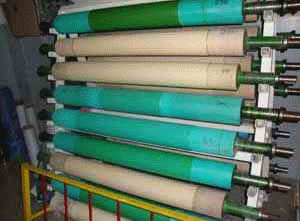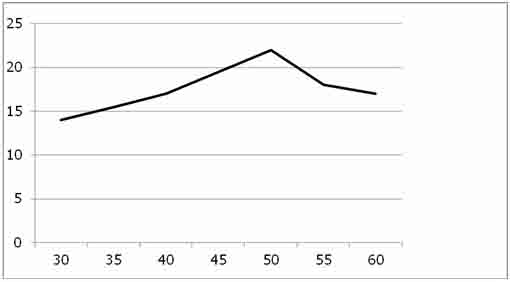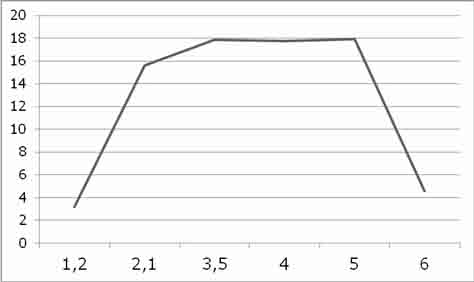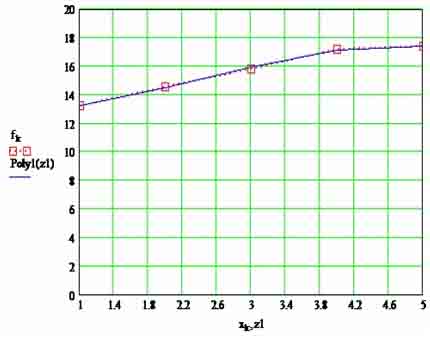Faculty: Ecology and chemical technology
Speciality "Chemical technology of high molecular connections "
Study the process of lamination of polymer materials
Scientific adviser: Prazdnikova Tatiana
Abstract
CONTENTS
INTRODUCTION
Relevance of the work:to date, the link quality polypropylene composition of transparent and metallized polypropylene enough to ensure the requirements of the packaging market. Therefore, research to improve the strength characteristics of the films are relevant.
Novelty:prior to this study was unknown, and from the literature is not set combined effect of factors on the strength characteristics of the materials;
The theoretical value is to establish the factors influencing the strength characteristics;
Object — the interaction of adhesive compositions with polymeric materials;
Subjects of research:adhesive composition, polymeric materials, paints;
Objective: To study the properties of laminated films;
Ensure connection strength of laminated polymeric materials.
Objective: To achieve this goal, you must solve the following tasks:
1. Theoretical aspects and identify the nature of problems arising during the lamination;
2. Parameters that affect the polymerization of adhesive composition;
3. Provesty research aimed at identifying risk factors for high strength characteristics of laminated film;
4. Trends theme "Lamination of polymer materials;
1. LITERATURNY REVIEW
The very notion of lamination is derived from the English word "laminate" —covering a sheet of paper with a protective layer of the film, hence the name of the equipment on which this process works—laminator.[1] Lamination process recently has become an essential part of our daily lives (this is true: a driver's license, inspection stamps, badges, passports, etc.), but despite this has been firmly taken its place and position is not going to pass.[2]
Scope of application of this product are very extensive and varied, in this regard in the light began to appear various types of laminators: batch and roll, which in turn are divided into office, the model with average performance and high-performance industrial machines — capable of working around the clock with the vast circulations
The main purpose of laminating first and foremost is the protection from external environmental factors. All images with electrostatic printers are still quite vulnerable to weather and mechanical abrasion. Hence the need for lamination or other surface protection of these images. Laminating already come into use in many areas, such as in printing, design and decoration work, advertising, and many others.[3]
Fig.1 –Equipment for laminating
2 EXPERIMENTAL
The main task of research was to identify the main parameters affecting the strength characteristics of laminated materials. To this end, a series of measurements, whose results are presented below
1.issledovanie influence of the applied adhesive bond strength of the films.
Progress tests: samples were obtained laminated film transparent polypropylene composition + polypropylene metallized with a different amount of adhesive spread, samples prosushuvalis 4 days to achieve complete polymerization of the glue, then conducted tests on the strength characteristics on a universal tensile testing machine "Testometric", the results are recorded in Table 2.1
Table 2.1–Results of research
Sample number Number of adhesive spread, g/m lamination strength, MPa 1 1,3 11.54 2 1.4 13.47 3 1.5 14.84 4 1.7 17.67 5 1.8 18.65 6 1.9 20 7 2 22.3 8 2.1 18.4 9 2.3 15.75 
Amount of glue, g / m 2
Fig. 2.1, a plot of bond strength on the amount of adhesive spread
2.Issledovaniya effect of temperature on the strength characteristics of the shaft
The temperature on the shafts, ° C
Fig.2.2–A plot of bond strength of the films on the temperature of the shafts
3. Effect of pressure nip rollers on the strength of adhesion of films
Pressure on the nip rollers, Bar
Ris.2.3–plot of bond strength of the films on the pressure nip rollers
4. Dependence of bond strength of the films from drying time
Drying Time, days
Fig.2.4–A plot of bond strength on the speed of equipment
Analysis of results
Thus, upon receipt of schedules can make the following conclusions:
1. When the amount of the applied glue to 2 g / m an increase in bond strength of the films, with a further increase in the sediment of glue there is a "telescoping" roll with the film.[4]
2. The temperature at the shaft affects the fluidity of the adhesive and the filling of microcracks in the material, for this reason that the bond strength increases and the films. When the temperature in the shaft exceeds 50 ° C the spreading of the glue and a decrease in its adhesion to the film.[5]
3. The following graph, a graph of bond strength of the films on the pressure nip rollers. Increased pressure nip rollers to the value of 0.35 MPa leads to an increase in bond strength of the films, 0,35-0,5 MPa — the bond strength does not change, then there is the dot gain adhesive composition onto the shafts and a decrease in bond strength of the films.[6]
4. Dependence of bond strength of the films from drying time. According to the results we can conclude that with increasing drying time rolls the lamination strength is growing. 4 days is sufficient to obtain laminate films with high strength.
LITERATURE
- Гельмут Киппхан Энциклопедия по печатным средствам информации. Технологии и способы производства. – М.:– МГУП, 2003.
- Техника флексопечати [электронный ресурс]. – Режим доступа:http://www.ips-ink.com/publ/index.php3?cont=view&id=120000101
- Митрофанов В.П.Техника флексографской печати: Учебное пособие / Пер. с нем.– M.: Изд-во МГУП «Мир книги», 1997– 202 с.
- Беляков Н.С., Палош В.Е., Садовский П.А. TEX для всех: Оформление учебных и научных работ в системе LATEX. – М.:Изд-во МГУП «Мир книги», 2007г.– 365 с.
- Воробьев Д. В. Технология послепечатных процессов. – М: МГУП, 2000. –392 с.
- Ю.Ц.Жидецький, О.В.Лазаренко, Н.Д.Лотошинська, В.З.Маїк Поліграфічні матеріали. – Львів.:Афіша, 2001 г.–165 c.
- Бобров В.И., Куликов Г.Б.Послепечатное оборудование: Учеб. пособие для вузов. – М.: МГУП, 2000г. –130 с.
- Журнал Флексо плюс Выпуск№5[электронный ресурс]. – Режим доступа:http://www.globaldance.info/
- Дж. Пейдж Крауч. Основы флексографии.– М.: МГУП, 1999г. –72 с.
- Воронцов Н.А. Упак Италия: Заметное постоянство на Российском рынке. – М.: МГУП, 1996г. –42 с.
